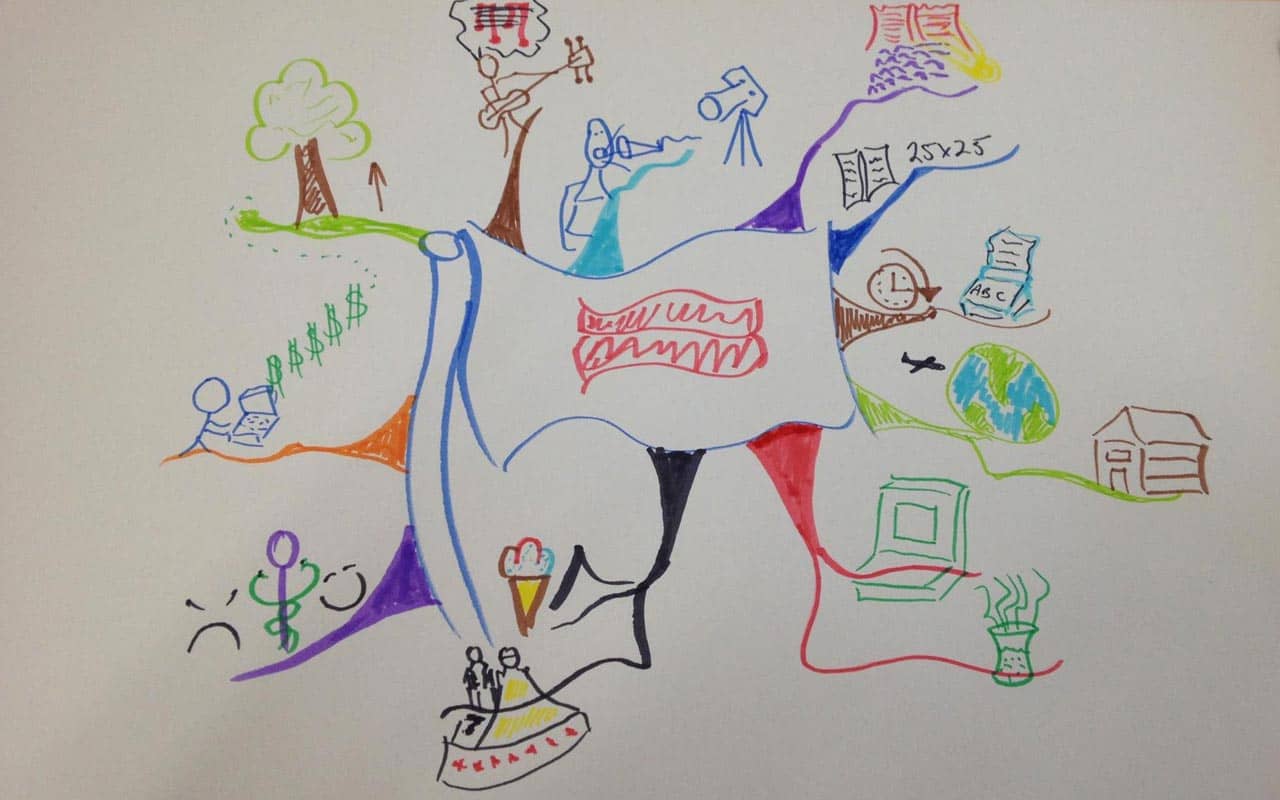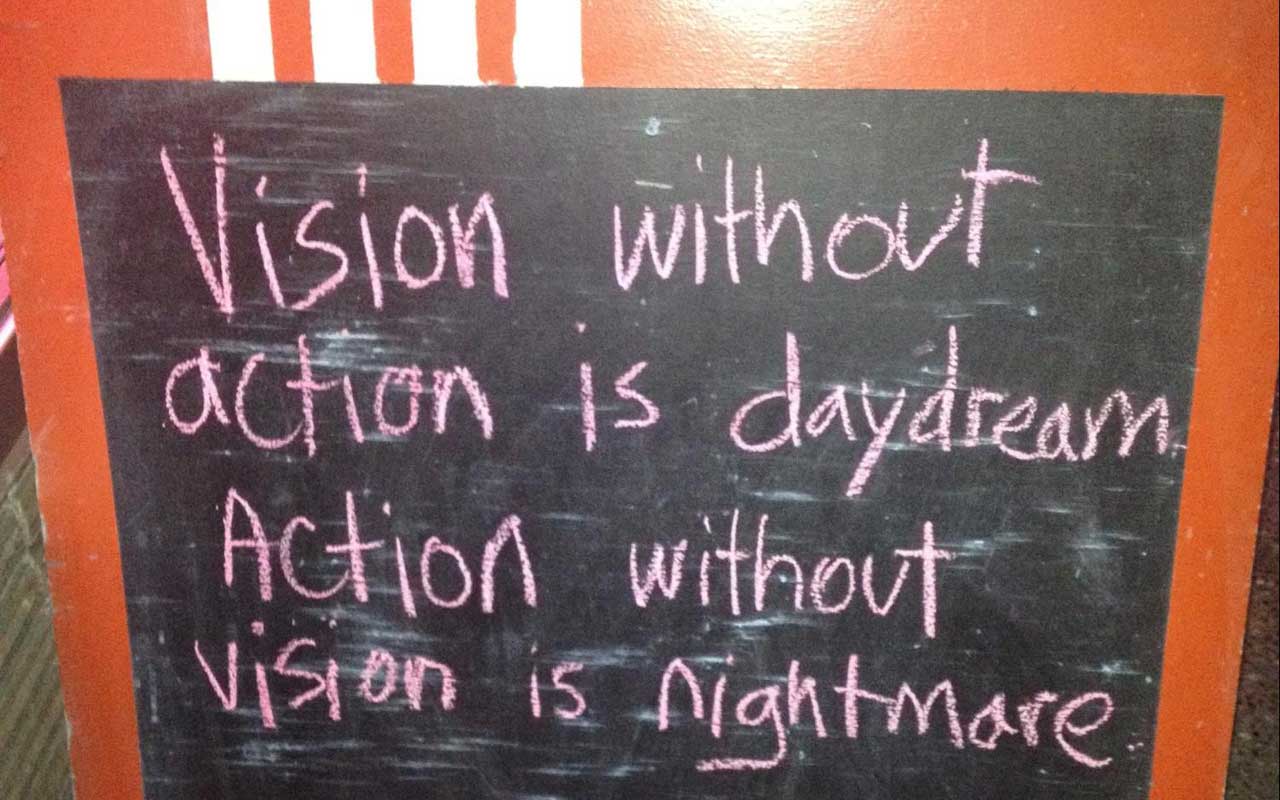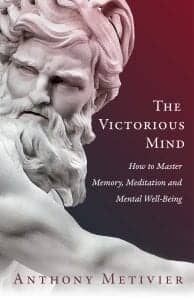Podcast: Download
Subscribe: Apple Podcasts | RSS
 If you want to know how to visualize clearly and effectively, you probably already have a vision statement written.
If you want to know how to visualize clearly and effectively, you probably already have a vision statement written.
You have written out a vision statement by hand, haven’t you?
If the answer is “no,” then I’m here to tell you that your visualization is neither clear nor complete. And that means you’re still struggling to achieve your goals.
If you’re still not living the life you want, study this page carefully.
You’re about to learn how to visualize images in your mind that will make it impossible not to become the architect of your dreams and fantasies.
Better?
You’ll also learn how to be the builder of your success.
Here’s what this post will cover:
How to Visualize Clearly: 7 Tips For Success
1. Don’t Stop At The “Visual”
2. Have a Written Vision Statement
3. Mind Map Your Vision
4. Create a Treasure Map
5. Do a Visualization Meditation
6. Journal Daily
7. Plan Your Action Steps
Visualize Images Based On Existing Competence
How to Visualize Clearly: 7 Tips For Success
Ready to learn how to visualize better? Here are 7 pointers.
1. Don’t Stop At The “Visual”
Far too many people think that “visualization” is about seeing clear pictures in their minds.
Not only is this single-sensory form of dreaming your way to success extremely limited — it also fails to really help you access all levels of your experiential brain.
Instead, you want to tap into every possible sensation you can muster. That’s why I want you to memorize this simple acronym:
KAVE COGS
These are the eight most powerful senses of multi-sensory visualization I know:
Kinesthetic
Auditory
Visual
Emotion
Conceptual
Olfactory
Gustatory
Spatial
Every time you visualize images, make sure you’re also feeling, smelling, tasting, hearing, and emotionally experiencing your goal.
2. Have a Written Vision Statement
A written vision statement is a simple, 2-5 page declaration of what you want to achieve in your own words.
Words are just as “visual” to your brain as images, with each word acting like an interpretable picture at the conceptual level.
Plus, by writing out your vision you symbolically and literally signal to your brain that you value your goals. You “see” yourself taking action and it becomes a lived experience.
Plan to write multiple vision statements. It is a repeatable activity and each time you it will serve you well. So too will these additional 5 visualization exercises.
3. Mind Map Your Vision
A mind map, on the other hand, is more visual in the traditional sense. Here, you will use a combination of words and drawings to let yourself conjure up your goals at a glance.
I was very fortunate to learn mind mapping directly from Tony Buzan. In fact, I mind mapped the Magnetic Memory Method mission under his personal tutelage back in 2016 and still follow the vision you see represented above.
I find this approach very useful because mind maps are big, colorful and you can place them in your work area.
This keeps you focused on the goal — and helps ensure you never forget what you’re working to achieve.
4. Create a Treasure Map
To use this technique, which is similar to mind mapping, open a Word document and search for images that represent your goals.
In the above example, I made it my vision to publish multiple books, travel the world, and play in a band. So I added images that represented these outcomes.
Within a few short months, using a combination of all the techniques you’re reading now, I was out on the road — and I’ve never looked back since.
The trick is to print out a couple of copies and keep them where you can see them.
5. Do a Visualization Meditation
To experience a visualization meditation, sit on the floor, on the side of your bed, or on a chair. Close your eyes and bring your goal to mind using KAVE COGS.
I like to go through each experiential mental image in that exact order because it’s easy to remember the stack.
For example, if you want to master playing a musical instrument and have learned how to memorize a song, start with kinesthetic sensations.
That means you might imagine the feeling of holding your instrument or the stage beneath your feet as you step in front of an audience.
Then hear the music flowing out of you. See the stage next, including the lights, the audience, and your fellow musicians. Let the emotions roll through you and carry on with the rest.
Powerful stuff, isn’t it?
Add a walking meditation to the mix and the other varieties I teach in The Victorious Mind: How to Master Memory, Meditation and Mental Well-Being and watch the results unfold.
6. Journal Daily
When I was learning how to visualize effectively, journaling was key.
In fact, I still journal a “Perfect Present” vision statement every day. It goes like this:
I wake up healthy and strong. The worth of my being is great. I live in joy and abundance. I meditate, exercise and eat well. My passive income exceeds my lifestyle by 10x. I write and play music every day in joy and abundance.
Again, writing things out makes your action visible to you. And you can run through KAVE COGS as you write out your goal.
Not only is writing out a vision statement scientifically viable, research groups at schools like Notre Dame have been using texts formalized by other scientists and researchers (like Janel M. Radtke) going back to 1988.
7. Plan Your Action Steps
I took a snap of this Japanese Proverb outside of a cafe in Vancouver, British Columbia:
Vision without action is daydream. Action without vision is nightmare.
In reality, there’s nothing wrong with daydreaming — so long as you’re willing to accept the suffering that comes from not achieving realistic goals.
That’s why we need to break our goals down into milestones and individual steps or micro-actions we can take. These need to be charted out over time.
As much as possible, these steps should be automated, or optimized, so they take place without the need for willpower or motivation.
For example, every week I release new blog posts, videos, and podcasts. There’s a system behind how everything happens. It’s not exactly flexible, but not rigid either.
It just serves the needs of my vision statement for the Magnetic Memory Method.
And I plan, and replan, as you should too — including the time to meditate and visualize using KAVE COGS.
Visualize Images Based On Existing Competence
One last power tip:
A lot of people visualize goals beyond their abilities.
For example, I am in no way accepting a “limiting belief” when I realize that I am not going to become a world-famous musician.
My musical competence was good enough to play on quite a few stages in quite a few bands and do some recording. But I’m just not going to put in the time and effort to reach that “next level.”
And that’s why when I worked to visualize clearly what I wanted to achieve musically, I placed it within the realm of what I could actually accomplish.
That way, my efforts to join a band and get out on the road were not wasted. I could learn songs quickly and perform them to a decent standard.
But my psoriatic arthritis flared while I was on the road. No amount of visualization was going to make my hands performance-ready for recording on the album with The Outside I’d been preparing to produce with them.
But I could help out with the lyrics and even write a short vocal cameo I had on the album. In other words, I didn’t give up on the vision: I pivoted.
Expand Your Existing Competence
Sometimes you can visualize beyond your competence. For example, I’m a decent writer and it was great that I could get The Victorious Mind to reach #1 in three bestseller categories on Amazon as an independent author.
But I don’t want to be independent forever. So I have to visualize with radical honesty my existing competence and my dream of having a traditional publisher help with a book that will reach a larger audience.
Then, I have to visualize all the skills I need to add in order to reach that next level — and write them out. Next comes the plan with all the milestones and individual micro-actions.
Finally, the 7 visualization steps listed above are needed to make everything as clear and doable as possible. And it’s clear to me that the number one thing I need to expand is reaching out to editors and mastering relationship building with them.
Sure, all of this takes mental strength. But it’s worth pursuing every ounce of grit you can get, and so I ask you:
What can you do to visualize your existing competence related to your bigger goals right now?
Never forget, every moment you aren’t taking action and visualizing based on the strongest possible multi-sensory models, you are leaving so much of life’s precious riches behind.
Hopefully, by now you have more than a few solid ideas that will make your visualizations clearer than ever before. And if I’m missing any, let me know. I’ll visualize them into the mix!
And be sure to pick up your copy of The Victorious Mind: How to Master Memory, Meditation and Mental Well-Being and put the meditations in the book to use on your journey to visualize clearly and effectively!
Related Posts
- 5 Proven Visualization Reading Strategies For Comprehension And Memory
What is a visualization reading strategy and how does it affect memory and comprehension? This…
- Memory Athlete Braden Adams On The Benefits Of Memory Competition
Braden Adams is one of the most impressive memory athletes of recent times. Learn to…
- How to Build a Memory Palace: Proven Memory Palace Technique Approach
Want to know how to create a memory palace? I've been using the memory palace…













6 Responses
I am so happy to find this awesome helpful page, thank you Anthony , I am ready to start visualizing and doing my best to use your techniques.
Much love
Luisa
I’m glad you found this helpful, Luisa.
Any particular goals that you want to accomplish?
Great Post, Anthony!
To be honest, Visualisation is just awesome and I use to daily to plan my day in my mind.
Planning is a great use for visualization. Well done!
Thank you very much for this post. I want to visualize mathematics. Please help!!! 🙏🙏
Rohit
Thanks, Rohit.
Visualizing math comes down to having mnemonic systems for numbers, symbols and the alphabet.
It’s really little more than an hour or two of set up and then a few hours of practice to create up the main associations you’ll need.